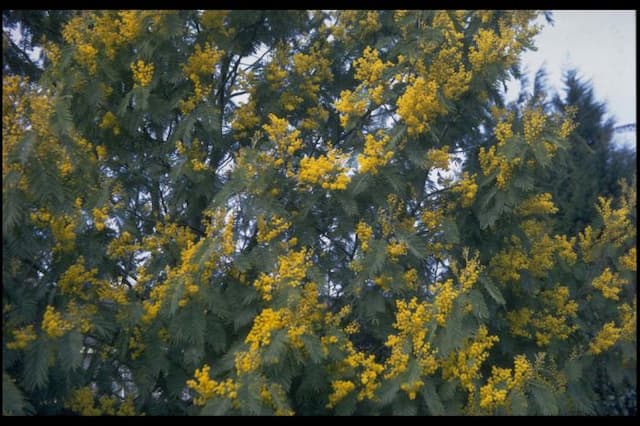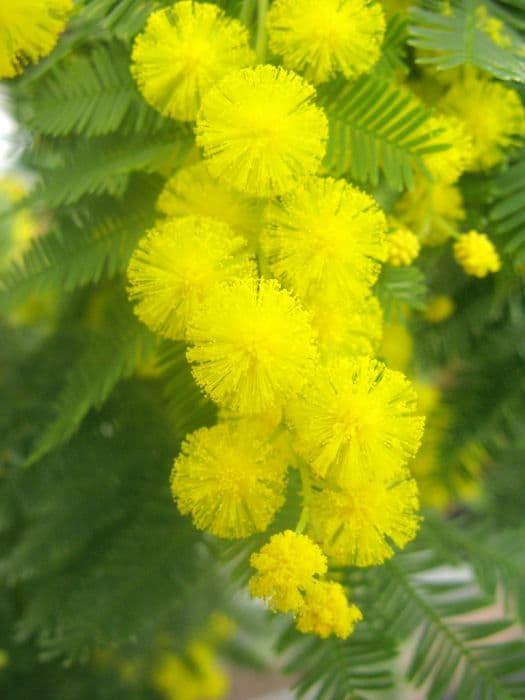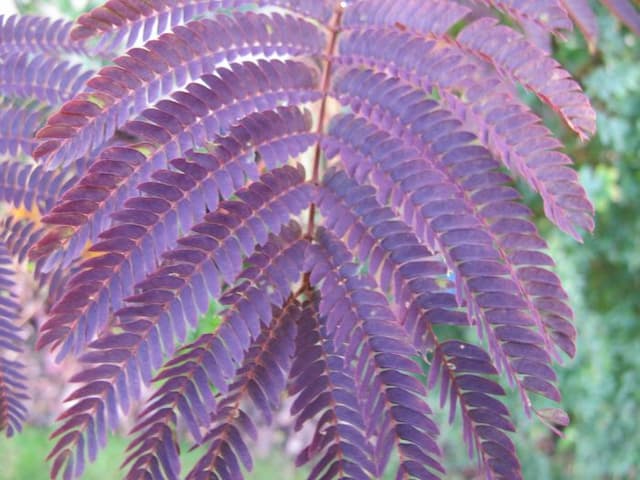Sweet pea 'Wisley' Lathyrus odoratus 'Wisley'

ABOUT
An annual climber to 2m, with fragrant, reddish-purple flowers in short racemes on long stalks in summer and early autumn
About this plant
 Names
NamesFamily
Fabaceae
Synonyms
Sweet Pea, Everlasting Pea
Common names
Lathyrus odoratus 'Wisley'.
 Characteristics
CharacteristicsLife cycle
Annuals
Foliage type
Deciduous
Color of leaves
Green
Flower color
Varies
Height
6 feet (1.83 meters)
Spread
1 foot (0.30 meters)
Plant type
Climber
Hardiness zones
2
Native area
Mediterranean
Benefits
 General Benefits
General Benefits- Aesthetic Appeal: The sweet pea plant (Lathyrus odoratus 'Wisley') is popular for its vibrant, colorful flowers, adding beauty to gardens and landscapes.
- Fragrance: Sweet peas are known for their strong, sweet fragrance, which can enhance the sensory experience of a garden space.
- Cut Flowers: Sweet pea flowers are excellent for cutting and arranging in vases, maintaining their beauty and fragrance indoors.
- Pollinator Attraction: The flowers attract bees, butterflies, and other pollinators, contributing to the health of the local ecosystem.
- Climbing Habit: This plant has a climbing habit, which makes it perfect for trellises, arches, or fences, providing vertical interest in the garden.
- Easy to Grow: Sweet peas are generally easy to cultivate, making them suitable for novice gardeners or those with less experience.
 Medical Properties
Medical PropertiesThis plant is not used for medical purposes.
 Air-purifying Qualities
Air-purifying QualitiesThis plant is not specifically known for air purifying qualities.
 Other Uses
Other Uses- Lathyrus odoratus 'Wisley', commonly known as Sweet Pea, can be used in educational settings such as schools or botanical gardens to teach plant biology and hybridization techniques, due to the variety of colors and forms achieved through selective breeding.
- Artists and photographers often use Sweet Peas as subjects in their work to capture the intricate beauty and vibrant colors of the flowers.
- These plants can be utilized as natural decorative elements in eco-friendly weddings and events, especially since their blooms are fragrant and add to the ambiance.
- Because of their climbing nature, Sweet Peas can be employed in landscape design to create living walls or privacy screens in gardens and patios.
- The stems and vines of Sweet Peas can be woven into wreaths or other forms of greenery decor, taking advantage of their pliable and sturdy nature.
- Used in the culinary field, the flowers of Sweet Peas can embellish cakes and desserts as edible decorations, although it's important to ensure they have not been treated with pesticides.
- As a symbol of delicate pleasure and goodbyes, Sweet Peas can be included in farewell gifts or used in valedictory ceremonies.
- The strong stems of Sweet Peas make them excellent candidates for crafting natural dyes, which can be used in textile arts to create unique patterns and colors.
- Practitioners of the Japanese art of Kokedama sometimes incorporate Sweet Pea plants in their creations, making moss ball planters that highlight the flowers' aesthetic.
- Sweet Pea petals can be used to create eco-friendly confetti for celebrations, offering a biodegradable alternative to traditional paper or plastic confetti.
Interesting Facts
 Feng Shui
Feng ShuiSweet pea is not used in Feng Shui practice.
 Zodiac Sign Compitability
Zodiac Sign CompitabilitySweet pea is not used in astrology practice.
 Plant Symbolism
Plant Symbolism- Blissful Pleasure: Sweet pea flowers often symbolize the pleasure that is gained from enjoying the small things in life.
- Goodbye: Sweet peas can signify a farewell or departure, perhaps due to their ability to bloom and fade within a single season. This symbolism makes them appropriate for someone leaving or moving on.
- Thank You: Giving someone sweet peas can be a way of expressing gratitude or thanks for a kind gesture or favor received.
- Delicate Pleasures: The delicate and fragrant nature of sweet peas is akin to the enjoyment of delicate pleasures – those that are enjoyed briefly, but remembered fondly.
- Adieu: Similarly to symbolizing goodbye, sweet peas can also mean a more permanent farewell or the end of a period in your life.
 Water
WaterSweet peas, such as the Lathyrus odoratus 'Wisley', should be watered deeply but infrequently to encourage deep root growth. They prefer to be kept evenly moist, especially during the growing season. As a general rule, they may need watering once a week, providing about one gallon of water per plant. Adjust the watering frequency based on rainfall and check soil moisture before watering to avoid overwatering or underwatering. During hot, dry periods, more frequent watering may be necessary.
 Light
LightSweet peas thrive in full sunlight, requiring at least six hours of direct sunlight daily. The ideal spot for Lathyrus odoratus 'Wisley' would be one that receives morning sun and is protected from the intense afternoon heat, if possible. They can tolerate light shade, but too much shade will diminish their blooming potential.
 Temperature
TemperatureSweet peas prefer cool to moderate temperatures with the ideal growing range being between 55°F and 65°F. They can tolerate temperatures as low as 25°F but will struggle in heat over 75°F. For best growth, plant Lathyrus odoratus 'Wisley' in a location where they can enjoy cooler nights and early morning sun.
 Pruning
PruningRegular pruning of sweet peas, including the Lathyrus odoratus 'Wisley', promotes vigorous growth and abundant blooms. Deadheading, or removing faded flowers, will encourage the plant to produce more blooms. Aim to prune sweet peas every couple of weeks during their blooming season. The best time to do it is when you see spent flowers or to thin out crowded growth.
 Cleaning
CleaningAs needed
 Soil
SoilSweet peas like Lathyrus odoratus 'Wisley' thrive in rich, well-draining soil with a pH range of 6.0 to 7.5. A good mix would be one part loam, one part well-rotted manure or compost, and one part horticultural sand for drainage.
 Repotting
RepottingSweet peas, including Lathyrus odoratus 'Wisley', are typically sown directly into the ground and do not require repotting. If started in pots, transplant when they are still young before taproots develop.
 Humidity & Misting
Humidity & MistingSweet peas, like Lathyrus odoratus 'Wisley', prefer moderate humidity levels. Avoid overly humid conditions that can promote fungal diseases.
 Suitable locations
Suitable locationsIndoor
Provide rich soil, cool temps, ample light, and stake for climbing.
Outdoor
Plant in fertile soil, full sun, and provide support for climbing.
Hardiness zone
2-11 USDA
 Life cycle
Life cycleSweet pea 'Wisley', scientifically known as Lathyrus odoratus 'Wisley', begins its life as a seed, which, when sown in well-drained soil and provided with adequate warmth and moisture, will germinate. The seedling emerges, developing its first true leaves and rapidly growing into a young plant that requires support, as it is a climbing vine. As it matures, the plant produces tendrils that allow it to climb and secure itself to structures or supports. The vegetative stage involves the growth of stems, more leaves, and the establishment of a strong root system. Following the vegetative stage, the plant enters the reproductive phase, where it blossoms in the warm months, typically from late spring to the first frost, offering fragrant, colorful flowers. After pollination, the flowers develop into pods containing seeds, which, if not deadheaded, will mature and can be harvested for planting in the following season, thus completing its life cycle.
 Propogation
PropogationPropogation time
Spring to early summer
Lathyrus odoratus 'Wisley', commonly known as sweet pea, is most easily propagated through seed sowing. The best time to sow sweet pea seeds is in late winter or early spring, allowing the plant to establish a strong root system before the growing season. To propagate, seeds should be soaked in water for 24 hours to soften the seed coat, enhancing germination. After soaking, sow the seeds about 1 inch deep in well-drained soil and roughly 2 to 3 inches apart. Pods will develop as the flowers fade and seeds can be collected for next year's planting. Sweet pea prefers a location with full sun to partial shade and needs regular watering until established.









